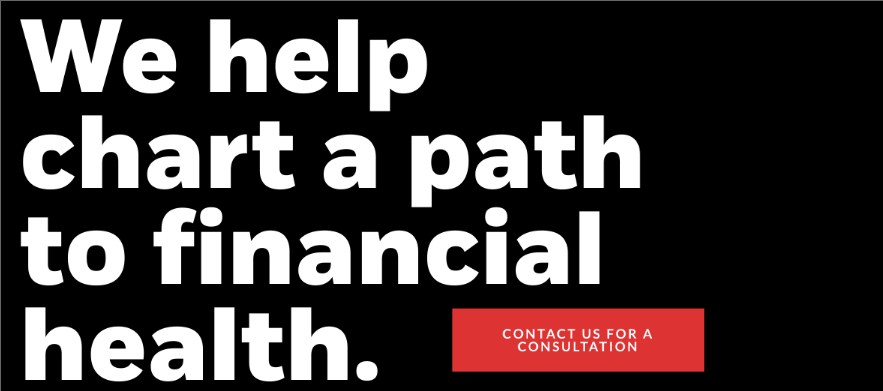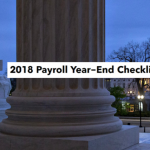5 strategies on how to reduce employer payroll tax liability
As a small business owner, do you fully understand how payroll taxes work and what impact it has on your business? This article will cover a few legal strategies you can use to lower employer payroll taxes.
What exactly are payroll taxes? They are also known as employment taxes, and they are the employer’s tax obligations related to compensation paid to its workers or employees. And there are both payroll taxes on the Federal and state levels. Payroll taxes pay for Social Security and Medicare, and the employer’s and employee’s shares can together comprise up to 13.3 percent of the employee’s income. If you want to reduce the amount of payroll taxes you have to pay every year, you can change your business structure or the types of employees you hire.
Barbara Weltman, a small business consultant published an informative article in the American Express Insights section, where she explains that “part of payroll taxes is the employer’s obligation to withhold income taxes and the employee’s share of Social Security and Medicare taxes (FICA); these taxes come out of the employee’s pay and do not cost the employer anything (other than administrative costs).” She also gave good tips about a few ways that an employer could lower their payroll taxes.
So How Much Does an Employer Pay in Payroll Taxes?
The Amex article explains that a company with salaried workers or an employer must pay the following on the federal level:
- The employer share of Social Security and Medicare taxes (FICA). The Social Security portion is 6.2% on a wage base ($147,000 in 2022); the Medicare portion is 1.45% on all wages.
- Federal unemployment tax (FUTA). The net FUTA rate, after, a credit for state unemployment tax, is 0.8% on the first $7,000 in wages per employee for employers in most states.
On the state level, the employer must pay state unemployment tax. The rate varies from state to state. States may assess this tax based on the employer’s experience with unemployment benefit claims; the fewer the claims, the lower the rate for the employer. The average rate nationwide is less than 2%. Most employers are tax-rated employers and pay UI taxes based on their UI rate. In California according to the EDD website, “the UI rate schedule and amount of taxable wages are determined annually. New employers pay 3.4 percent (.034) for a period of two to three years.”
California has four state payroll taxes:
- Unemployment Insurance (UI) and Employment Training Tax (ETT) are employer contributions.
- State Disability Insurance (SDI) and Personal Income Tax (PIT) are withheld from employees’ wages.
On average, payroll taxes can be about 10% of the compensation paid to employees. If an employee earns $50,000, it costs you about $5,000 in payroll taxes. On the bright side as a business owner, Mrs. Weltman layouts a few legal and simple strategies to control or reduce your payroll tax costs.
1 Use Accountable Plan For Employee Business Expense Reimbursement Arrangements
If you reimburse employees for travel expenses, home internet access for remote workers, tools or other job-related costs, the way in which you do this can favorably impact your payroll taxes. An employer accountable plan is an arrangement between employers and employees where the company reimburses employees for specified business expenses. Investopedia states that an “accountable plan is a plan that follows the Internal Revenue Service (IRS) regulations for reimbursing workers for business expenses in which reimbursement is not counted as income. This means that reimbursements are not subject to withholding taxes or W-2 reporting.” This means using an accountable plan which is an arrangement your company adopts (no formal written plan is required but highly suggested) for reimbursing employees that meet certain criteria listed below. Intuit has a sample form that can be used to adopt an accountable plan.
- Not taxable to employees (and not even reported on their Forms W-2)
- Exempt from FICA and FUTA taxes
An accountable plan is one that meets three requirements:
- Business connection – The expenses must have a business connection. Expenses incurred by an employee while doing the job usually have such a connection.
- Proper substantiation – The employee must adequately account to the company for expenses within a reasonable time (generally within 60 days after incurring the expense). Adequate accounting means completing expense reports (written or online) and providing the company with receipts, invoices and other documentary evidence of the expense. For example, accounting for business lunches means making a record of who the employee dined with, the business purpose of the meal, where and when it took place, and how much it cost. In addition, a receipt for the meal or the charge card statement is the documentary evidence needed here.
- Return of excess reimbursement – If the employer advances money, the employee must return to the company any excess reimbursements within a reasonable time (usually within 120 days after the expense is incurred).
The Journal of Accountancy wrote an article about this and states “accountable plans are a flexible tool to incentivize employees to pursue business goals and to facilitate employee-owners deductions of expenses they incur in running their businesses.” If done right, the plan is a win-win because the reimbursements aren’t taxable to employees and the employers don’t pay employment taxes on the reimbursements even though they’re tax-deductible. An accountable plan differs from a non-accountable plan.
Discuss reimbursement arrangements with your CPA or other tax advisors to make sure you’re handling things right. While the savings for operating a plan correctly can be great, the cost of mistakes can be even greater.
2 Pay Benefits Exempt from Payroll Taxes
Are you considering giving an employee a raise? Mrs. Weltman suggests that you could Instead, consider adding fringe benefits that are exempt from FICA and FUTA taxes. These benefits are products and services that the employee might otherwise have to buy with after-tax dollars, so they may be appreciated as much, if not more than, a raise. Most fringe benefits must be provided to staff on a nondiscriminatory basis and cannot be restricted to owners and their families.
Some fringe benefits which are exempt from FICA and FUTA taxes are:
- Accident and health benefits
- Dependent care assistance up to $5,000 a year (although it was $10,500 in 2021)
- Education assistance, including student loan repayment, up to $5,250 a year
- Employer contributions to retirement plans for employees
- Employee discounts up to set limits
- Group-term life insurance
- Health savings account contributions up to set limits
- Meals and lodging on business premises for the employer’s convenience
- Retirement planning services
For a complete list of fringe benefits and their tax status, see IRS Publication 15-B, Employer’s Tax Guide to Fringe Benefits.
3 Pay Corporate Directors
All corporations are required to have directors and to hold meetings at least once annually. If you own a corporation, consider transforming a portion of wages into a director’s fee as long as you continue to receive reasonable compensation for work performed as a corporate employee. This can work not only for you but also for any other employee who is also a corporate director. Set directors’ fees according to the time and work required. Fees usually include at a minimum a flat per-meeting payment ($200, $500 or more), plus reimbursement for travel and other expenses.
Directors are not employees of the corporation and payments to them are not subject to employment taxes. Directors’ fees are self-employment income, which is potentially subject to self-employment tax; if there are offsetting expenses to the fees, then there will be no such tax.
4 Use the Common Paymaster Rule
If a group of corporations shares, the services of an employee, the corporations can designate which one will be the “paymaster.” The paymaster pays the employee for services performed at the different corporations. This saves the group FICA and FUTA taxes. For example, say an individual is the 100% owner of two corporations and concurrently works for both of them. Assume salary from one is $75,000 and the salary from the other is $125,000. Without a common paymaster, each corporation would pay FICA and FUTA on the respective wages. With a common paymaster, one corporation pays these taxes on the total compensation, capping the employer’s cost for Social Security taxes at the annual wage base (e.g., $147,000 in 2022) and avoiding duplicate FUTA tax. In this example, a common paymaster saves the corporations more than $3,000 in payroll taxes.
5 Hire More Independent Contractors
Small business owners with employees are liable for the employer’s share of payroll taxes on their employees’ salaries, but if a business uses independent contractors rather than employees, the contractors are liable for their own payroll taxes. Thus, small business owners may want to use as many independent contractors as possible.
If a business owner has little or no control over how the employee does his work, doesn’t provide employee benefits, negotiates with the employee regarding payment rather than paying a set amount, and the employee is free to solicit work from others at the same time, the employee may qualify as an independent contractor.
Conclusion
It’s always advised to talk with a knowledgeable tax adviser who can help you find other ways to minimize employment taxes for your situation. Consulting with a CPA tax professional can help you save payroll taxes as well as help you assess the true cost of hiring new employees. And employer payroll responsibilities may seem overwhelming. The rules are continually changing, as evidenced in 2020 by a Form W-4, a higher wage base limit for Social Security taxes, mandatory payments of certain benefits offset by employment taxes, and a deposit deferral option. If you have any questions about payroll taxes or accounting don’t hesitate to reach out to Huckabee CPA for a free consultation.











